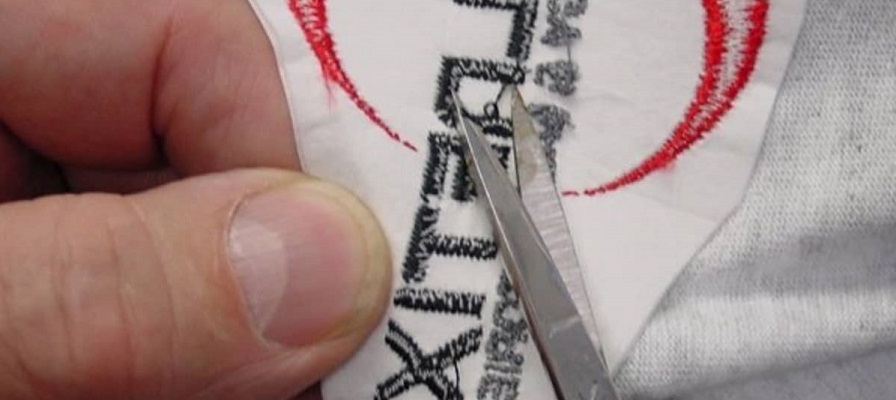
Embroidery Digitizing Mistakes – Embroidery digitizing is a captivating craft that seamlessly blends artistry with technology. It’s the process of converting artwork into a digital file that embroidery machines can understand and replicate. While it offers endless possibilities for creativity, beginners often encounter pitfalls that can hinder their progress. Whether you’re a hobbyist or aspiring entrepreneur, steering clear of common embroidery digitizing mistakes is crucial to mastering the art of embroidery digitizing.
Here’s a comprehensive guide to help you avoid those stumbling blocks and embark on your digitizing journey with confidence.
1. Neglecting to Choose the Right Software
One of the first decisions you’ll face as a beginner in embroidery digitizing is selecting the right software. With a plethora of options available, it’s easy to feel overwhelmed. However, opting for software that lacks essential features or is overly complex can hinder your learning curve.
Start with user-friendly software tailored for beginners, such as Wilcom Hatch, Embrilliance, or SewArt. These programs offer intuitive interfaces and robust functionality to kickstart your digitizing endeavors.
2. Ignoring Proper Image Preparation Embroidery Digitizing Mistakes
Garbage in, garbage out—this adage holds true in embroidery digitizing. Neglecting to prepare your images adequately before digitizing can lead to subpar results. Ensure your artwork is clean, high-resolution, and free from imperfections.
Remove any background clutter and adjust contrast and brightness levels to enhance clarity. Investing time in image preparation lays a solid foundation for seamless digitization and superior embroidery outcomes.
3. Overlooking Stitch Density and Underlay
Stitch density and underlay are fundamental aspects of embroidery digitizing that directly impact the quality of your designs. Failing to adjust stitch density can result in designs that are either too dense and rigid or too sparse and flimsy.
Likewise, neglecting proper underlay techniques can lead to puckering, distortion, or thread breakage during embroidery. Familiarize yourself with stitch types, densities, and underlay options to achieve optimal results for different fabric types and design complexities.
4. Rushing Through the Digitizing Process
Embroidery digitizing is a meticulous craft that rewards patience and precision. Rushing through the embroidery digitizing process often leads to errors and compromises the quality of your designs. Take the time to understand each step thoroughly, from importing artwork to defining stitch parameters and assigning color sequences.
Practice patience and attention to detail, refining your skills gradually to produce professional-grade embroidery designs.
5. Disregarding Thread and Fabric Compatibility
Your choice of thread and fabric plays a significant role in the success of your embroidery projects. Ignoring compatibility considerations can result in color bleeding, thread breakage, or uneven stitching.
Experiment with different thread types and weights to find the perfect match for your designs and fabric substrates. Familiarize yourself with fabric characteristics and adjust your digitizing settings accordingly to achieve optimal results on various materials.
6. Failing to Test and Refine Designs Embroidery Digitizing Mistakes
Testing and refining your designs are indispensable steps in the embroidery digitizing process. Skipping this crucial phase can lead to costly embroidery digitizing mistakes and disappointment. Before proceeding with large-scale production, stitch out a sample of your design on the intended fabric using your embroidery machine.
Evaluate the results closely, noting any areas of improvement or refinement. Make necessary adjustments to stitch parameters, colors, or design elements to enhance the final output.
7. Underestimating the Importance of Education and Practice
Mastery in embroidery digitizing is a journey rather than a destination. Underestimating the importance of ongoing education and practice can impede your progress and limit your creative potential.
Take advantage of online tutorials, workshops, and forums to expand your knowledge and skills. Dedicate time to regular practice sessions, experimenting with different techniques and design concepts to hone your craft continually.
8. Ignoring Design Scalability and Complexity
One common mistake beginners make is overlooking the scalability and complexity of their embroidery designs. Failing to consider scalability can result in designs that are too intricate for smaller embroidery areas or too simplistic for larger ones.
Similarly, disregarding design complexity can lead to excessive thread changes, longer production times, and decreased stitch quality. Learn to adapt your designs to different sizes and intricacies while maintaining visual impact and stitch integrity.
9. Underestimating Color Theory and Sequencing
Color plays a pivotal role in the visual appeal and legibility of embroidery designs. Underestimating the principles of color theory and sequencing can diminish the effectiveness of your creations. Take the time to understand color harmonies, contrasts, and balance to create designs that resonate with your audience.
Pay attention to color sequencing, ensuring smooth transitions and optimal thread management during embroidery digitizing mistakes. Experiment with different color combinations and sequences to enhance the vibrancy and clarity of your designs.
10. Neglecting Copyright and Intellectual Property Rights
Neglecting to obtain proper permissions or licenses for copyrighted artwork can lead to legal repercussions and reputational damage. Avoid using copyrighted images or logos without explicit authorization, and seek out royalty-free or licensed artwork for your digitizing projects. Additionally, consider offering custom digitizing services or creating original designs to showcase your creativity while respecting the rights of others.
Final Words about Embroidery Digitizing Mistakes
Embroidery digitizing offers a world of creative possibilities for enthusiasts and entrepreneurs alike. By avoiding common embroidery digitizing mistakes and embracing best practices, beginners can embark on their digitizing journey with confidence and achieve stunning results. Remember to choose the right software, prepare your images meticulously, pay attention to stitch density and underlay, and practice patience and precision in every step of the process. With dedication, perseverance, and a thirst for knowledge, you’ll unlock the full potential of embroidery digitizing and bring your artistic visions to life.




